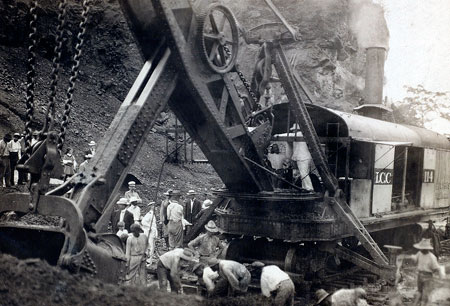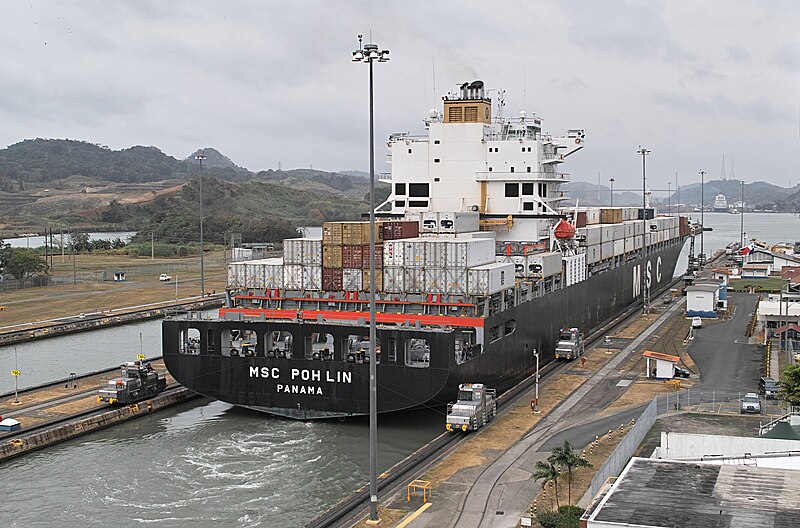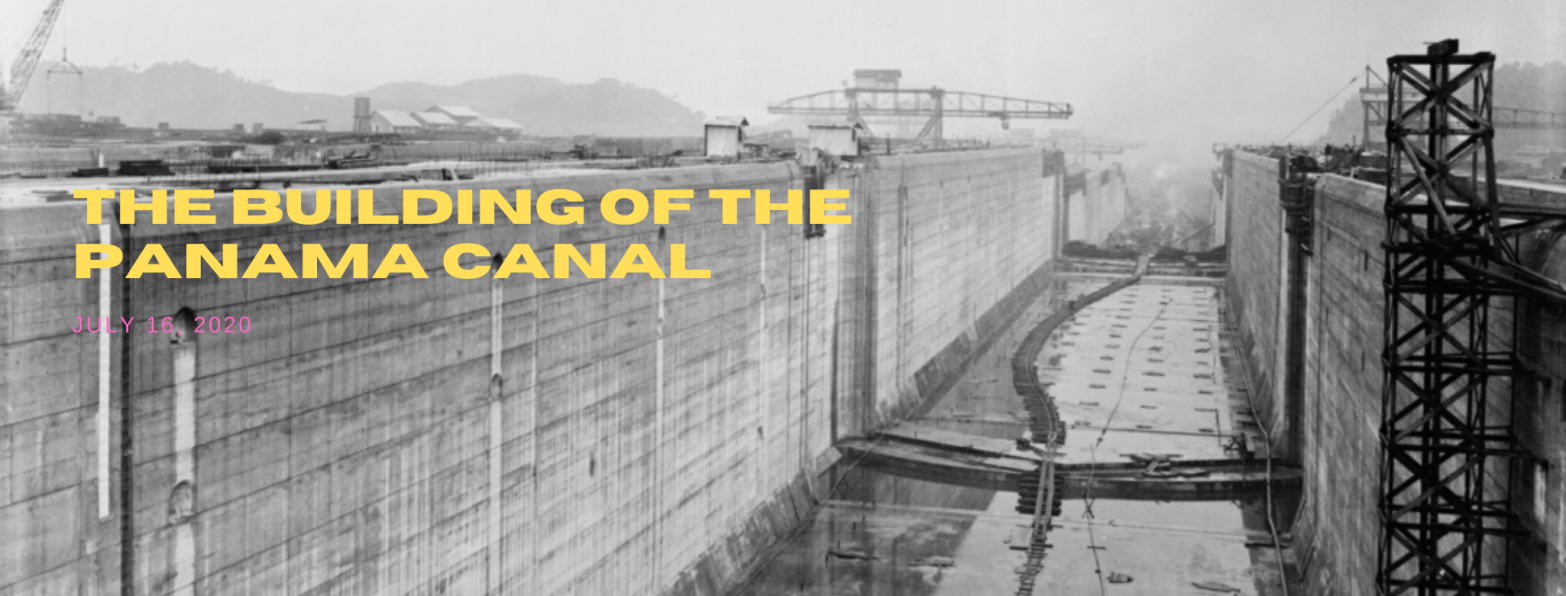The Panama Canal is not the longest manmade waterway in the Western Hemisphere, but it is the most important, as it bridges the Atlantic and Pacific Oceans. Additionally, its construction is one of the most impressive feats of human engineering in history. Numerous political leaders bandied about plans for connecting East and West through Panama over several centuries, but those ambitions would only be reached in 1914. The history of this modern marvel is long and complicated, and several books have been written on the project. This post is intended as a brief history of the canal’s construction, although I’ll probably work on a more in-depth treatment of the subject in the future.
The geography of the Americas is such that from the time of European arrival in the Western Hemisphere until the completion of the Panama Canal, the only way to travel between the Atlantic and Pacific Oceans was by journeying around Cape Horn at the southern tip of South America. Spanish administrators in the 16th and 17th centuries recognized the opportunity presented by the Panama isthmus and began moving goods over land—Spanish ships from the Philippines would arrive on the west coast of Panama and unload goods, which would then be transported to the east coast and loaded on different ships as cargo for Spain. But because of generally difficult construction conditions and political instability in the late 18th and early 19th century, no canal plans were formalized until the mid-19th century.1

By 1850, United States politicians recognized the need for a quicker route between the east and west coast of the U.S. The discovery of large gold deposits in California sent Americans scrambling westward, but also necessitated massive quantities of cargo space to send back east. Since the railway linking New York and San Francisco was still many years away, the quickest route between the two cities included steamships to and from Panama and a short overland voyage across the isthmus. By 1855 the U.S. government worked with the government of Colombia, which had controlled Panama since independence from Spain in 1821, to finance a railroad to quicken this part of the journey.
By the 1870s, trans-continental road and rail systems existed, but many leaders and businessmen wanted an all-water route for shipping goods. Despite the fact that a railroad now existed in Panama, there was no guarantee that the canal would run through the isthmus at the same point. In Central America, canal engineers had multiple locations from which to choose. Panama offered the shortest overland distance for the canal, but its location at the far south of Central America made journeys for ships longer both before they entered and after they left the canal. Proposed routes farther north offered longer routes but better terrain for construction. Panama’s most serious competition came from Nicaragua, which offered a slightly longer route but much flatter terrain; the Nicaraguan route was also closer to the lanes used by many cargo ships, and it would make use of large lakes and inland waterways to make construction easier. As the 1870s passed by, both routes underwent serious consideration, but seismic activity in Nicaragua led European and American investors to select what they considered the safer choice: Panama.2

From Port Economics Management: https://porteconomicsmanagement.org/?page_id=405
French companies, aided by the French government, began work on cutting a canal through Panama in 1881, but the effort was doomed by high mortality among workers and a shortage of funds.3 After the project temporarily lay dormant for many years until the United States picked it up, picking up where the French had left off. Panama remained part of Colombia, and the Colombian government continued to hold out for better terms once the Americans decided to build their canal in Panama. American President Theodore Roosevelt, impatient to begin the project, instigated and funded a Panamanian independence movement and stationed warships off the coast of Colombia in 1903.4 Soon after, Panama was declared independent (although it remained a U.S. protectorate for decades longer) and the canal would finish construction in 1914—more than three decades after construction began and twelve years after Americans inherited the project.

Library of Congress, Prints and Photographs Division: https://history.state.gov/milestones/1899-1913/panama-canal
At various times, Colombia, France, and the United States controlled the territory surrounding the canal during construction. Even after it was completed, U.S. forces would occupy the surrounding area—called the Panama Canal Zone—until the 1977 Torrijos–Carter Treaties provided for handover to Panama.5 In 1999, the canal was taken over by the Panamanian government, where it is now managed and operated by the government-owned Panama Canal Authority. Dreams of building a transport system across the Isthmus of Panama began soon after the Spanish conquest of the Americas, and while it took them nearly 400 years to come to fruition, the canal that links West to East is now regarded as a marvel of modern engineering. Listed as one of the American Society of Civil Engineers’ “7 Wonders of the Modern World,”6 the Panama Canal now permits nearly 15,000 ships to cross from one ocean to the other annually.7

Dicklyon / CC BY-SA (https://creativecommons.org/licenses/by-sa/4.0); https://commons.wikimedia.org/wiki/File:Panamax_ship_exiting_the_Miraflores_locks.jpg
- Panama Canal Authority: http://www.pancanal.com/eng/history/history/early.html
- Office of the Historian: https://history.state.gov/milestones/1899-1913/panama-canal
- From America’s Triumph in Panama by Ralph E. Avery: http://www.czbrats.com/Builders/FRCanal/failure.htm
- Hay-Herrán Treaty: https://www.theodorerooseveltcenter.org/Learn-About-TR/TR-Encyclopedia/Foreign-Affairs/Hay-Herran-Treaty
- https://web.archive.org/web/20150410075709/http://www.history.com/this-day-in-history/panama-to-control-canal/print
- ASCE: https://web.archive.org/web/20100802060056/http://www.asce.org/Content.aspx?id=2147487305
- https://www.pancanal.com/eng/acp/asi-es-el-canal.html

Very informative article. I really enjoy reading your posts. 😊
LikeLike
Thank you! I’m glad that you enjoy reading them. Don’t forget to subscribe for email notifications!
LikeLike
curious about your choice of language in the section on “supporting ” the Panamanian independence movement and Americans “inheriting” the canal project. These actions were driven by American imperialist desires to control trade in the hemisphere and American support for the Panamanian independence movement was contingent upon a forced 99-year lease over the Panama Canal Zone. Don’t sugar coat imperialism, Alex!
LikeLike
Hi, Marco! You’re absolutely right. I’ve updated the word choice on “supporting,” as it doesn’t tell the full story–the Americans played a role in instigating and funding the movement, as well. As far as inheriting the canal project, I’ve chosen to leave that word the same, but I recognize your concerns. I intended for this to be an entry-level history of the canal project; at some point in the future, I will be going into more detail on the pitfalls and successes of the project, as well as the political realities of the time. There will also be more content on colonialism, imperialism, neo-colonialism, and dependency as time goes by. Thank you for your comment and please keep engaging with the content I produce!
LikeLike